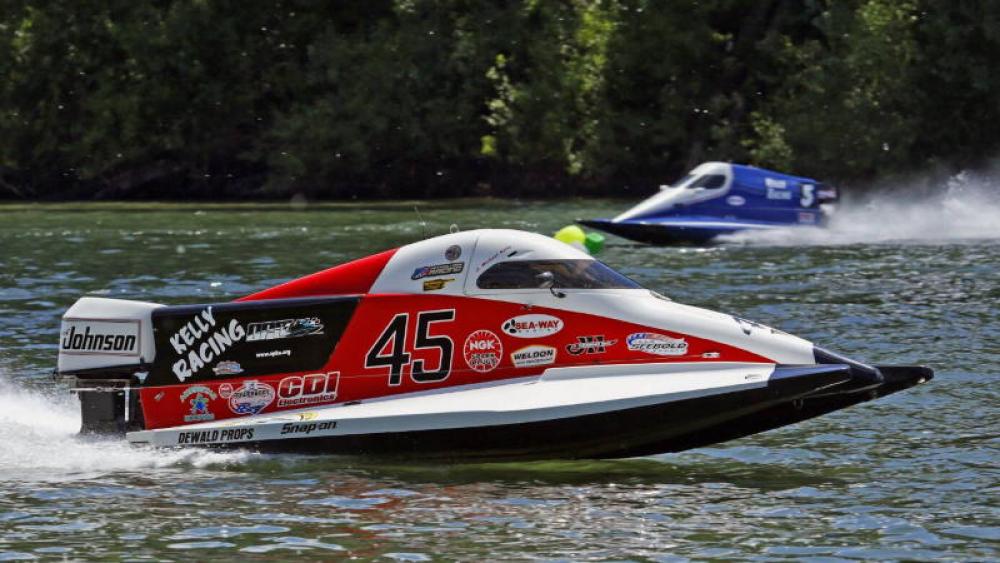Powerboat racing is an exciting and complex watersport, with three main disciplines: offshore, circuit, and personal watercraft. While all three variations share the same draw of high-energy aquatic competition, they vary significantly in the types of boats they use and the format of the races. Each discipline is further broken down into different classes based on the type and size of the boat, as well as engine size. Let’s dig into what defines each of these classes and how they differ from one another.
1. Offshore Powerboat Racing
Offshore powerboat racing represents the sport at its most intense and competitive. This racing variation is an extreme watersport that attracts some of the most talented aquatic racers. However, there are several levels of competitive offshore powerboat racing, allowing both novices and experts to compete based on their skill level.
Some of the most popular offshore powerboat racing competitions include:
- P1 SuperStock – This race series is one of the most affordable and accessible powerboat racing events. Each team uses the same standardized boats and machinery, making the race an even playing field where skill decides who wins, not expensive racing components.
- ThunderCat Racing – Known as Superlight Tunnel Boat races in the United States, these American Powerboat Association events use small, catamaran-style inflatable watercraft racing in turbulent waters. This leads to some awe-inducing acrobatic stunts, as the light boats catch air over waves and dodge near wipe-outs in pursuit of victory.
- UIM Class 1 World Powerboat Championship – A flagship series and one of the oldest competitions in the sport, this event involves high-powered Class 1 boats racing at speeds of over 160 miles per hour. The best racer over the series of eight races is crowned world champion.
2. Circuit Racing
Circuit race events are typically held on inshore lakes, where powerboat racers compete in races built of small, circuit-like tracks. These high-speed races are one of the most accessible forms of the sport, with classes for amateurs and even children as young as 9 years old.
Circuit racing can be further divided into three main subcategories:
- Monohulls
As the name suggests, monohulls are single-hulled watercraft with seated drivers. They are similar to ski boats. Monohulls are broken down into three classes:
- GT15 – Boats with 3-meter monohulls and a 15hp engine, this class is for junior racers between 9 and 16 years old.
- GT30 – Once junior racers turn 14, they can compete in the GT30 class, which features 30hp engines and has no upper age limit.
- T850 – This class is limited to simple monohulls with standard stock 70 or 90 hp and outboard engines.
- Catamarans
A catamaran is a twin-hulled boat that restrains the driver within a safety pod. Tunnel-hull catamarans are designed to reach high speeds and move with agility along the water.
Catamarans are divided into two main classes:
- F2 – F2 boats have uniquely designed hulls that allow them to quickly make hairpin turns, all while taking on more G-forces than any other type of racing vehicle. They have a very high power-to-weight ratio and are capable of going from 0 to 60 mph in under 5 seconds.
- F4s – The F4s class is a green alternative to the F4 class. Boats in this class have tunnel-hull catamaran designs and are smaller than F2 powerboats but are also capable of reaching high speeds and maneuvering with precision. This racing class also uses factory standard engines and prohibits any modifications, making it more affordable and competitive.
- Hydroplanes
Hydroplane boats have twin hulls at the front portion of the boat, which extend no more than 60 percent across the hull in a single stern. Drivers sit, kneel, or lie down in the craft. The most popular class of hydroplanes is the OSY400, which is powered by 400cc outboard engines.
The OSY400 class is a fun, affordable, and accessible class. These small hydroplane boats use 400cc Yamato stock engines and are cheap enough to attract a wider audience, including casual racers. The boats are usually built of wood or composite materials and cost between $4,000 and $5,000, on average.
A variety of hydroplane racers compete against each other in the UK British National Championship. Some of these crafts are capable of reaching speeds of over 100 mph.
3. Personal Watercraft Racing
Also known as Jet Sport Racing in the UK, personal watercraft racing has three main disciplines:
- Circuit – This style of personal watercraft racing is run by the Jet Sport Racing Association, which hosts fast races on tight circuits. Racers can choose from three types: ski (stand-up), sport (single-seater), and runabout (sit-down).
- Racing – The organization P1 AquaX is in charge of the racing discipline. These events involve races on the open sea, which often creates challenges in navigating rough coastal conditions.
- Endurance racing and freestyle – The Freestyle National Tour runs the freestyle discipline, which allows racers to wow spectators with acrobatic stunts on inshore courses and the open sea. Similar to the X Games or Olympics, competitors are awarded points and the highest average scores win.

